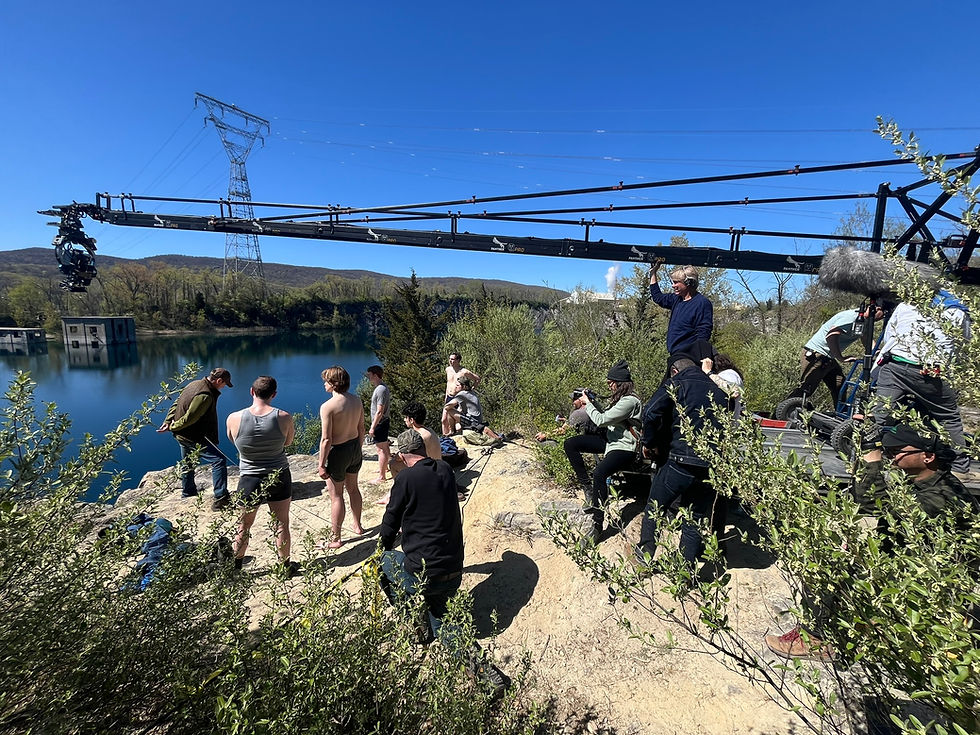Lightning Safety: Protecting Lives in TV, Film Production, Live Events and Sports Broadcasts
- Jay King

- Oct 17, 2023
- 3 min read
[Originally posted on LinkedIn on July 26, 2023]

June 18-24th was the National Weather Service's "Lightning Awareness Week" (NOAA: National Oceanic & Atmospheric Administration), so I put together a quick post on Lightning Safety Programs.
Does your production or event have a severe weather safety program and action plan? Ping me if you'd like to discuss. Feel free to share any other important points in the comments.
Introduction:
While television, film production, and sports broadcasts provide captivating entertainment, they also involve potential risks, particularly when it comes to lightning. As an employer in these industries, ensuring the safety of your team during inclement weather is paramount.
The serious risks associated with lightning can be significantly reduced through lightning safety awareness training, pre-production planning, and the creation of a well-defined action plan.
In this post, I’ll outline effective lightning safety measures for outdoor production and events.
Lightning Safety Awareness Training:
Developing a culture of lightning safety awareness is essential to protect everyone involved. Educate your team on the following key aspects:
Lightning Threat: Inform personnel about the dangers of lightning strikes, including the risk of electric shock, fire hazards, and the potential for severe injuries or fatalities.
Weather Monitoring: Encourage the use of reliable weather monitoring tools and apps to stay updated on local forecasts and thunderstorm warnings. Emphasize the need for constant vigilance, especially during outdoor shoots or events.
Lightning Safety Guidelines: Provide clear instructions on lightning safety protocols, such as seeking shelter in substantial buildings or enclosed vehicles, avoiding open fields, tall structures, and bodies of water during thunderstorms.
Early Warning Systems: Some locations and venues have installed lightning detection systems, which can provide advanced warning of lightning activity in the vicinity, allowing for timely evacuation or suspension of outdoor operations.
Preparation and Risk Assessment:
Taking proactive steps to assess risks and prepare for severe weather hazards (including lightning) is vital. Consider the following measures:
Location Scouting / Surveying: Prioritize safe shooting or broadcasting locations that offer adequate shelter options, such as sound structures or indoor venues, in case of inclement weather.
Risk Assessment: Evaluate the risk level of each production or broadcasting site in relation to lightning activity. Consider factors such as proximity to tall structures, open areas, and the availability of lightning protection systems.
Communication Channels: Establish effective communication channels among crew members and event staff, enabling prompt dissemination of weather-related updates and evacuation instructions.
Safety Equipment: Facilities should invest in lightning protection equipment, such as lightning rods or conductive materials, to mitigate the impact of lightning strikes. Ensure these systems are professionally installed, regularly inspected, and maintained according to industry standards.
Creation of an Action Plan:
An actionable and well-communicated plan is essential to respond swiftly and effectively during lightning-related activities. The plan needs to include the following components:
Plan Triggers: Define scenarios and criteria that will trigger the actions in the plan. These may include the issuance of severe weather alerts or detection of lightning within a certain distance from the site.
Emergency Procedures: Outline clear procedures for suspending activities, communicating to all personnel, relocating personnel to safe areas, and managing crowd evacuation in large-scale events. Designate specific individuals responsible for implementing the plan and communicating instructions to all parties involved.
Communication Protocols: Establish reliable communication channels, including two-way radios or mobile messaging apps, to facilitate quick and efficient communication during emergencies.
Training and Drills: Conduct training sessions and drills to familiarize your team with lightning safety protocols and emergency procedures. Practice evacuations and ensure everyone understands their role and responsibilities.
Post-Incident Assessment: After each incident, review the effectiveness of your action plan, identify areas for improvement, and update protocols accordingly.
Conclusion:
The serious risk presented by lightning is obvious and the need for a plan is clear. Lightning safety is a critical consideration for employers in TV, film and sports production, as well as live events.
By promoting lightning safety awareness, conducting risk assessments, and implementing a comprehensive action plan, you can safeguard the well-being of your team and production continuity during inclement weather conditions. Clearly the safety of personnel (and event attendees) should always be the top priority, ensuring that your production or event does not end in tragedy.


Comments